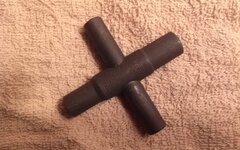A poncho & liner combo like the one Wiggy's or Hill People Gear sells can be rain gear, shelter, thermal layer, & sleeping bag. Not inexpensive but versatile. Unfortunately, not compact either. They're a little bulky but I feel it's worth it.
I do keep a pair of lightweight rain pants in my kit. They'll keep me dry and warm especially if it's breezy. Full side zips give plenty of ventilation.
I have a small alcohol stove and a folding twig stove and a small pot. I can boil water if needed so I don't carry a filter. I do carry some iodine tablets for chemical purification if necessary to keep moving.
Small roll of duct tape is definitely worth it's weight.
I've been thinking about adding a large piece of plastic. This will give me the impetus to do that.
I do keep a pair of lightweight rain pants in my kit. They'll keep me dry and warm especially if it's breezy. Full side zips give plenty of ventilation.
I have a small alcohol stove and a folding twig stove and a small pot. I can boil water if needed so I don't carry a filter. I do carry some iodine tablets for chemical purification if necessary to keep moving.
Small roll of duct tape is definitely worth it's weight.
I've been thinking about adding a large piece of plastic. This will give me the impetus to do that.












